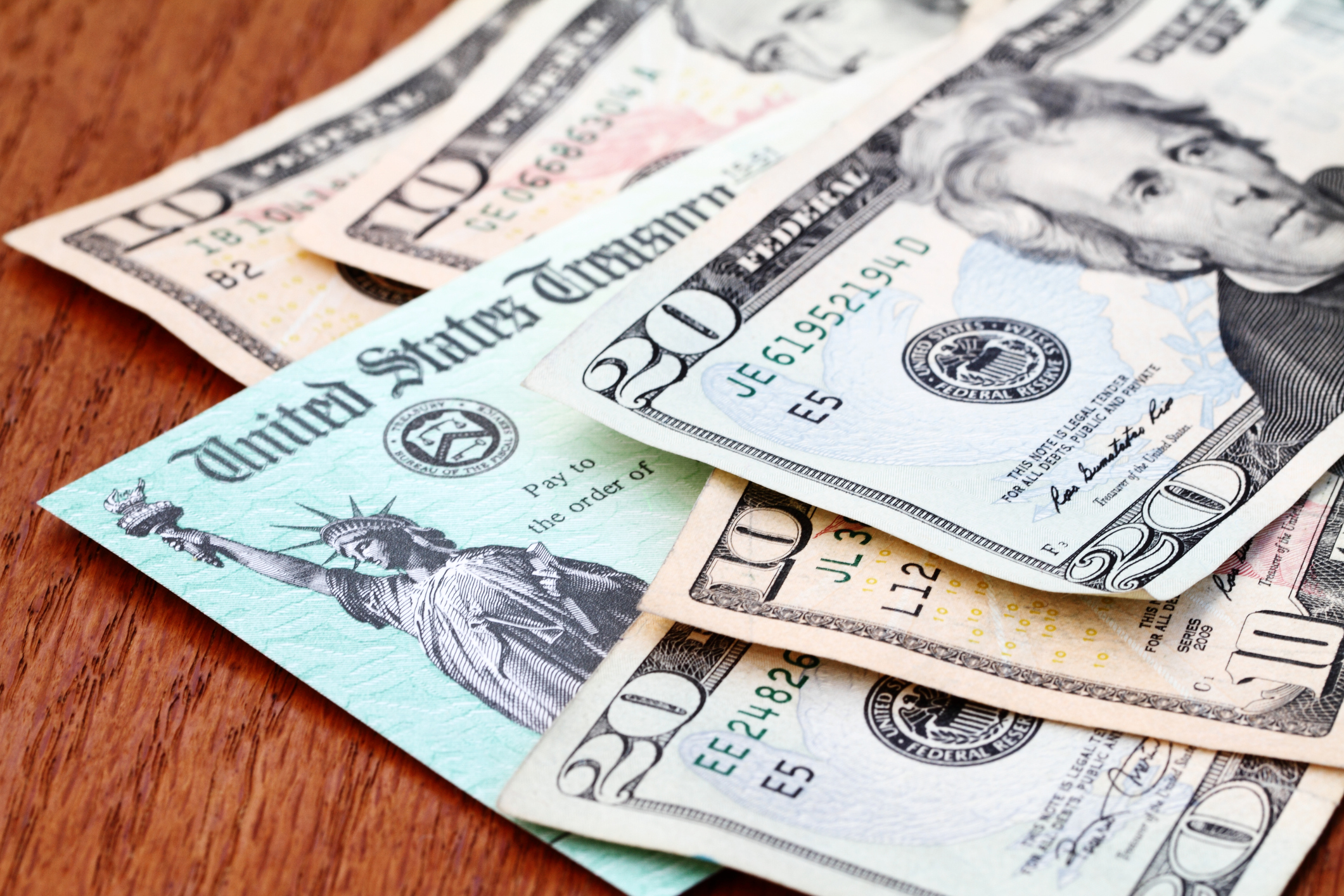Tax Moves that Save Big Bucks
Now's the time to cash in on breaks for 2009.

Sometimes you have to spend money to make money. This year, you may want to spend money to save money. By shelling out now for select big-ticket items—such as a new car, energy-efficient home improvements or your first home—you can cash in on some juicy tax breaks that will slash your 2009 income taxes.
For example, even if you missed out on the 'cash for clunkers' government rebate earlier this year, you can still save big by deducting the state and local taxes on a new car, light truck, motor home or motorcycle purchased between February 17 and December 31, 2009. That's what Steve and Karen Crosby did—twice. Now the Hamburg, N.J., couple have two new cars and can claim nearly $3,600 in sales-tax deductions. In their 25% federal tax bracket, that will save them about $900.
The deduction, which you claim when you file your 2009 tax return next spring, is limited to the taxes and fees paid on up to $49,500 of the purchase price. But there is no limit to how many vehicles you can buy. The break is available to individuals with an income of $135,000 or less and married couples with a joint income of $260,000 or less.

Sign up for Kiplinger’s Free E-Newsletters
Profit and prosper with the best of expert advice on investing, taxes, retirement, personal finance and more - straight to your e-mail.
Profit and prosper with the best of expert advice - straight to your e-mail.
You can claim the deduction even if you don't itemize by adding the sales-tax amount to your standard deduction. And if you live in one of the five states that don't impose a state sales tax—Alaska, Delaware, Montana, New Hampshire and Oregon—you can deduct other fees or taxes your state or local government imposes on vehicle purchases.
This special tax break is in addition to the existing law that allows taxpayers who itemize to choose between deducting their state income taxes or their state sales taxes. So depending on where you live and whether you itemize, you may be able to deduct both your state income taxes and the salestaxes you paid on a new vehicle this year.
Go green
The popular home-energy tax credit is back, and it's bigger and better than ever. If you add insulation or install energy-efficient replacement windows, doors or skylights in your primary residence by the end of the year, you'll qualify for a tax credit equal to 30% of the cost, up to a maximum of $1,500.
That's three times as large as the 2007 home-energy tax credit. (A tax credit, which reduces the amount of tax you owe, is more valuable than a tax deduction, which merely reduces the amount of income subject to tax.)
The new, enhanced home-energy credit, which also covers super-efficient central air-conditioning units, heat pumps, furnaces and hot-water heaters, is available through 2010. So if you can't get the job done by New Year's Eve, don't fret; you can claim the credit on your 2010 taxes. Homeowners who install renewable-energy devices qualify for an even bigger tax break: 30% of the cost, with no maximum.
Qualifying improvements, which can be installed through 2016, include geothermal heat pumps, solar water heaters, solar panels, fuel cells and small wind-energy systems (see www.energytaxincentives.org for details). But to claim the renewable-energy credit on your 2009 taxes, you must install the devices this year.
Buy a house
More taxpayers, including higher-income people and existing homeowners in the market for a new house, now qualify for the popular home-buyer tax credit. And get this: If you buy a home before the end of the year -- or if you have already closed on your new digs -- you don’t have to wait until you file your tax return to collect your cash.
If you finalize your home purchase by year-end, you can file an amended 2008 tax return (that’s right, we said 2008 return) and collect your refund in a matter of weeks. And won’t that come in handy when the holiday bills start rolling in?
If your home-sale negotiations drag into the new year, don’t fret. You can qualify for a credit if you sign a binding contract by April 30, 2010, and close the deal by June 30. (Members of the military serving outside the U.S. for at least 90 days can take advantage of the credit until June 30, 2011.)
Read more details in our FAQs on the New Home Buyer Credit.
Take profits tax-free
Toward the end of the year, investors usually scour their taxable accounts for losing investments they can sell, using the losses to offset any capital gains and up to $3,000 of ordinary income. But this year, taxpayers who find themselves in the 10% or 15% tax bracket—possibly due to unemployment, reduced work hours or underperforming investments—may have an opportunity to take advantage of the 0% capital-gains rate and sell assets for a profit tax-free. To qualify, your 2009 taxable income—gross income minus personal exemptions, credits and deductions—can't exceed $33,950 for individuals or $67,900 for married couples filing jointly.
"We're looking at a new phenomenon this year: harvesting gains rather than losses," says Michael Kitces, a financial planner with the Pinnacle Advisory Group, in Columbia, Md. Some of his clients, including a man who recently lost his job, are cashing in investment gains tax-free to generate needed income, Kitces says. Others, including retirees who are in a lower tax bracket because they don't have to take distributions from their IRAs this year, are selling winning investments tax-free to lock in gains. (The required-minimum-distribution rules are suspended for 2009.) You can always repurchase the same stocks and funds to establish a higher cost basis (which will result in smaller taxable gains or larger tax-deductible losses when you sell them in the future).
If you're a more typical investor and don't qualify for the 0% capital-gains rate, then the traditional strategy of harvesting losses to offset gains makes sense, says Don Linzer, head of Schneider Downs Wealth Management Advisors, in Pittsburgh. (Don't forget to check your 2008 return for carry-over losses.) It's a great way to rebalance your portfolio to get back to your desired asset allocation without paying taxes on your gains.
Give to charity
Always dependent on the kindness of strangers, charities are particularly hard-hit in today's tough economy because many donors are tightening their belts. If you are able to open your heart and wallet this year, make sure you follow the IRS's rules for documenting donations. The rules, which were made tougher a few years ago, require you to have a receipt (a bank record or credit-card statement will do) for a cash donation in any amount and an acknowledgment from the charity for a cash donation of $250 or more. For noncash donations of $500 or more, you need a receipt from the charity. You must itemize to deduct a charitable contribution.
Consider donating appreciated stock rather than cash to your favorite cause. As long as you own the stock for more than a year before you donate it, you reap a double tax break: You can deduct the full market value of your donation (not the lower amount that you paid for it), and you'll escape paying capital-gains tax on the appreciation. The charity that receives the gift doesn't pay taxes on it, either.
Philanthropic-minded seniors who are 701/2 or older may donate money directly from an IRA to a charity—even though they are not required to take IRA withdrawals this year. It could be your last chance to move money out of your IRA tax-free because this tax break expires after 2009 and Congress may not renew it. But be aware that you can't double-dip and claim a deduction for your charitable contribution, too.
Feed your 401(k)
For most employees, the best way to reduce taxes is to maximize your contributions to tax-deferred retirement accounts. This year, you can contribute up to $16,500 to your 401(k) or similar workplace-based plan, such as a 403(b), a 457 or the federal employees' Thrift Savings Plan. If you will be 50 or older by the end of the year, you can make additional catch-up contributions of up to $5,500, for a total of $22,000 for 2009. You still have time to boost your salary deferral from your last few paychecks for the year or to direct some or all of a year-end bonus (if you're lucky enough to get one) to your retirement savings. And you can make IRA contributions for 2009—up to $5,000, or $6,000 if you are 50 or older—as late as April 15, 2010. Depending on your income, you may be able to deduct your IRA contribution.
Check your withholding
Beginning in July, Americans' paychecks got a little bit bigger, thanks to the Making Work Pay credit. Tax-withholding tables were adjusted to reflect the new economic-stimulus credit in effect for 2009 and 2010. It is worth 6.2% of earned income and is capped at $400 for individuals and $800 for married couples.
But some taxpayers who received the credit aren't entitled to it because either they earn too much or don't have any earned income. If that describes you and you don't adjust withholding before the end of the year, you may have to give the money back, either in the form of a smaller tax refund or a higher tax bill next spring. The credit starts phasing out for single filers with $75,000 of AGI and dries up at $95,000. The phase-out zone for couples is $150,000 to $190,000.
Consider adjusting your tax withholding if any of the following situations applies to you: You have more than one job; both you and your spouse work; you can be claimed as a dependent on someone else's tax return; or you have taxes withheld from a pension check. Retirees—most of whom received an economic-stimulus check of $250—may also have to give some money back if they work. They can keep only $150 of the Making Work Pay credit (after subtracting the $250 stimulus check from the maximum $400-per-person tax credit).
Also, if you are receiving unemployment, the first $2,400 of benefits in 2009 are tax-free but amounts above that are taxable. You may want to have money withheld from your check to avoid owing taxes next spring.
But most people have the opposite problem: 70% of taxpayers have too much money withheld from their paychecks, resulting in smaller paychecks now and big tax refunds in the spring. "We need to wean people from their refund-check addiction so they stop giving interest-free loans to the IRS," says Roni Deutch, a tax lawyer and author of The Tax Lady's Guide to Beating the IRS.There's still time to use the IRS's withholding calculator, at www.irs.gov, to compute your proper tax withholding. (You can also use the worksheets in Publication 919, How Do I Adjust My Tax Withholding?) If you need to change your tax withholding, submit a new Form W-4 to your employer or a Form W-4P to your pension administrator as soon as possible.
Get Kiplinger Today newsletter — free
Profit and prosper with the best of Kiplinger's advice on investing, taxes, retirement, personal finance and much more. Delivered daily. Enter your email in the box and click Sign Me Up.

-
 Five Medicare Changes Coming in 2026
Five Medicare Changes Coming in 2026Learn about the benefits that become permanent features of Medicare in 2026 and how they have been changed or updated since their inception.
-
 Discover Which Five States Have AAA Offices Offering Real ID Services. Learn What You Need To Do To Take Advantage of Them.
Discover Which Five States Have AAA Offices Offering Real ID Services. Learn What You Need To Do To Take Advantage of Them.A trip to the DMV can be a painful experience. Skip the line and visit your AAA office to get your REAL ID (select states only).
-
 Big Tax Deduction Increase Proposed for Those Over Age 65
Big Tax Deduction Increase Proposed for Those Over Age 65Tax Deductions A new bipartisan bill could mean bigger retirement tax savings to offset taxes on Social Security and high prices.
-
 New HSA Contribution Limits Are Set for 2026: What to Know Now
New HSA Contribution Limits Are Set for 2026: What to Know NowHealth Savings The IRS says Health Savings Account contribution limits will increase again next year due to inflation.
-
 Retirees: Don’t Miss These Valuable State Tax Breaks in 2025
Retirees: Don’t Miss These Valuable State Tax Breaks in 2025Retirement Planning Selecting the right state for retirement can significantly impact your financial well-being.
-
 Trump’s Tax Cut Risks Your SNAP, Medicaid Benefits
Trump’s Tax Cut Risks Your SNAP, Medicaid BenefitsTax Cuts The GOP budget blueprint could slash lifesaving programs for millions of U.S. households.
-
 Missed Tax Day? Nearly One Million Taxpayers Still Can File and Claim Valuable Tax Refunds
Missed Tax Day? Nearly One Million Taxpayers Still Can File and Claim Valuable Tax RefundsTax Refunds As many as one million taxpayers could be missing out on a significant tax refund.
-
 Which Generation Pays the Most Tax in the US?
Which Generation Pays the Most Tax in the US?Tax Burden Polls show that most people feel like taxes are unfair. But which age group bears the brunt of the tax burden in the United States?
-
 How the Trump Harvard Tax-Exempt Threat Could Impact You
How the Trump Harvard Tax-Exempt Threat Could Impact YouTax Law Trump's latest higher education showdown raises fundamental questions that could reach beyond Harvard's nonprofit tax status.
-
 Tax Day 2025: Don’t Miss These Freebies, Food Deals and Discounts
Tax Day 2025: Don’t Miss These Freebies, Food Deals and DiscountsTax Day You can score some sweet deals on April 15 in some select restaurants like Burger King, Shake Shack, and more.